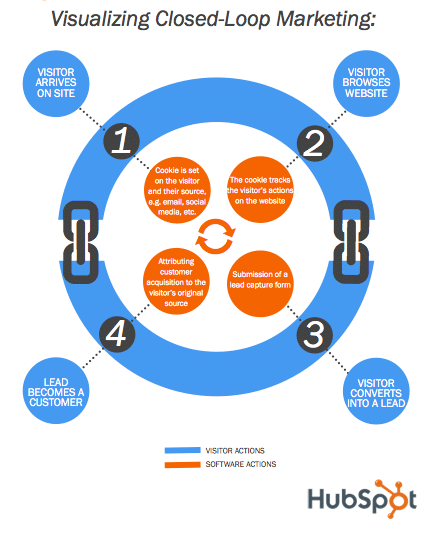Subscribe now and get the latest podcast releases delivered straight to your inbox.
How Closed-Loop Reporting Can Align Sales and Marketing

Apr 8, 2013

 Did you know that business owners are desperately reaching out and seeking solutions for synchronizing their sales and marketing teams?
Did you know that business owners are desperately reaching out and seeking solutions for synchronizing their sales and marketing teams?
Even though, logically it makes sense to have both teams work together, oftentimes sales and marketing seem to find one another at each other’s throats.
Communication and collaboration are key when it comes to having both teams working together.
What’s even more important is backing up any criticism or points with data, something which closed-loop reporting can provide. By involving both teams in the closed-loop reporting process, you’re giving them the opportunity to take a glimpse into one another’s world and see how they can benefit one another in reaching a common goal.
What Exactly is Closed-Loop Reporting?
It’s all about sharing insights on the lead and conversion process based on statistical data. For this process to work most effectively, the Sales team reports back to the Marketing team about what happened to the leads that they received – when they became customers or, if they didn’t, at which point a lead left the sales funnel.

The benefit to this is that the Marketing team will then be able to understand which are the best lead sources and which are the worst. Sales will be able to further appreciate and understand Marketing’s role in the customer acquisition process. Ultimately, having a closed-loop reporting process established will allow marketers to associate each lead, customer, and dollar spent on a campaign back to the particular initiative that drove them to you.
Four Basic Steps to the Closed-Loop Reporting Process
Step 1:
A visitor arrives on your site. At that time, a cookie is placed on the visitor, as well as the source that brought them there, such as an email, a Facebook link, a pay per click (PPC) ad, and so on.
Step 2:
A visitor browses your site. That cookie that was set on the visitor in step one will now track where that visitor went when they were on your site.
Step 3:
A visitor converts into a lead. A visitor may convert into a lead in a number of different ways, such as downloading an eBook, registering for a webinar, or singing up for your monthly newsletter.
Step 4:
A lead becomes a customer. This is where both teams can then attribute the acquisition of the customer to the visitor’s original source, such as through email, Facebook, or a PPC ad.
Setting Up Closed-Loop Reporting
Given that closed-loop reporting is statistically-driven, you probably have already figured out that you’ll need specific tools to be able to provide you with that data.
There are two sets of tools that you’ll need:
- Customer Relationship Management Software (CRM)
- Marketing Software
You’ll need to get your hands on some quality CRM software to help you sync up all of your sales, marketing, and customer support teams. This is essential in keeping them all on the same pageMarketing software is essential as it will hold all of your marketing data.
The end result is that your marketing software will allow you to optimize your marketing campaigns, improve your conversion rates, and more. We at IMPACT encourage our clients to use the HubSpot marketing software, as it provided the most accurate and in depth data amongst all of the marketing tools that we’ve worked with in the past.
No matter what tools you’re using for both CRM and marketing, you will need to integrate the two tools together so that both are able to “talk” to each other. When you integrate the two tools, all teams will be able to see the results of the other team. For example, if a sales representative closes a sale or a deal, then they can mark that lead as “won” in the CRM. You can then set up the tools to send a communication out to the Marketing team advising them as such, or the customer service team, or whoever you think should be notified. All teams will then also be able to see where the lead came from, what pages they visited, when they became a lead, and when they became a customer.
This was an excerpt from IMPACT’s popular ebook, "The Expert Guide to Aligning Sales & Marketing". For more expert tips on how to align your sales and marketing teams, be sure to check out the full ebook.
Photo Courtesy of Mark Rogers Photography
Free Assessment: